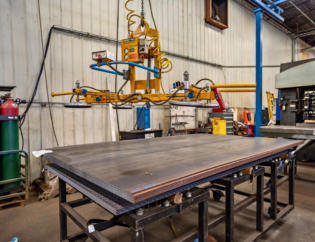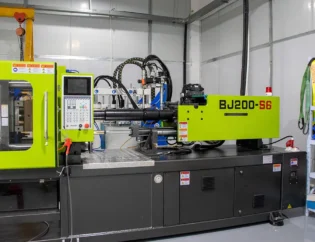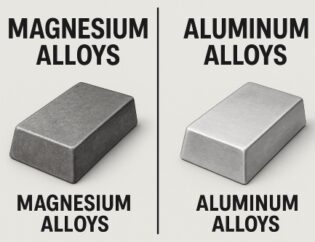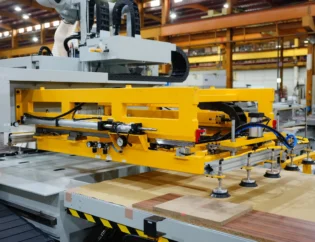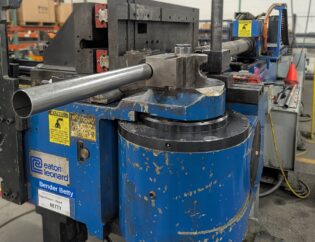CNC high precision machining is a cornerstone of modern manufacturing, enabling the production of intricate components with exceptional accuracy. This guide delves into the intricacies of CNC machining, exploring its significance in various industries, from aerospace to medical devices. Understanding these processes is crucial for engineers and manufacturers aiming to enhance product quality and efficiency.
Readers can expect to learn about the fundamental principles of CNC machining, including the technology behind it and the various types of machines used. We will also cover essential techniques, materials, and best practices that contribute to achieving high precision. By the end of this guide, you will have a comprehensive understanding of how to leverage CNC machining for superior results in your projects.
What is CNC Precision Machining? A Detailed Guide
Imagine a world where intricate designs and complex components are crafted with unparalleled precision and efficiency. This is the realm of CNC precision machining, a revolutionary technology that has transformed industries like aerospace, medical devices, and consumer electronics. At the heart of this transformation lies computer numerical control (CNC), seamlessly integrating advanced CAD/CAM software to automate and enhance the manufacturing process. This guide dives deep into the world of CNC precision machining, unraveling its definition, processes, and advantages over traditional methods. Explore how this technology ensures high precision, accuracy, and repeatability, and discover its critical applications across various sectors. Ready to uncover the secrets behind the cutting-edge machinery that is reshaping the manufacturing landscape? Let’s get started.
Understanding CNC Precision Machining
CNC precision machining is a manufacturing process that utilizes computer-controlled machines to create parts with high accuracy. Unlike traditional machining, which relies heavily on manual operations, CNC machining automates the entire process, allowing for consistent and repeatable results. This technology is essential in industries where precision is critical, such as aerospace, medical devices, and electronics.
Technical Features of CNC Precision Machining
CNC precision machining offers several technical features that enhance its effectiveness. Below is a comparison table highlighting these features:
| Feature | Description |
|---|---|
| Automation | Reduces human intervention, increasing efficiency and consistency. |
| Precision | Achieves tolerances as tight as ±0.001 inches, crucial for high-stakes applications. |
| Versatility | Capable of machining various materials, including metals, plastics, and composites. |
| Complex Geometries | Can produce intricate shapes and designs that are difficult to achieve manually. |
| Speed | Faster production times due to automated processes and continuous operation. |
| Quality Control | Integrated quality assurance measures ensure parts meet specified tolerances. |
Types of CNC Precision Machines
CNC precision machining encompasses various types of machines, each designed for specific tasks. The following table compares the most common types of CNC machines:
| Machine Type | Description |
|---|---|
| CNC Milling Machines | Use rotating cutting tools to remove material; ideal for complex parts. |
| CNC Lathes | Rotate the workpiece against a stationary tool; perfect for cylindrical parts. |
| CNC Routers | Cut and engrave soft materials like wood and plastics; used in signage and furniture. |
| CNC Grinders | Achieve smooth finishes by grinding down surfaces; essential for precision parts. |
| CNC Electrical Discharge Machines (EDM) | Use electrical sparks to cut hard materials; ideal for intricate shapes. |
| CNC Plasma Cutters | Utilize plasma to cut through conductive materials; effective for thick metals. |
The CNC Precision Machining Process
The CNC precision machining process involves several key steps, each critical to ensuring the final product meets design specifications.
1. Design and Programming
The process begins with engineers using CAD software to create a detailed 3D model of the part. This model includes all necessary dimensions and features. The CAD design is then converted into a format compatible with CAM software, which generates the G-code instructions needed for the CNC machine.
2. Setup
Once the design is complete, operators prepare the CNC machine by securing the raw material, adjusting fixtures, selecting tools, and inputting specific instructions such as speed and feed rate. A precise setup is crucial for achieving the desired results.
3. Machining Execution
After setup, the CNC machine follows the programmed instructions to cut, shape, or drill the material. This automation ensures high precision and repeatability, reducing human error and allowing for consistent production of high-quality parts.
4. Quality Inspection
Once the machining is complete, parts undergo rigorous quality inspections to ensure they meet specified tolerances and quality standards. Advanced measurement tools verify dimensions and surface finishes, ensuring that each part conforms to the design.
Applications of CNC Precision Machining
CNC precision machining is integral to various industries, each requiring the meticulous manufacturing capabilities it offers. Here are some key applications:
– Aerospace: Producing components that must withstand extreme conditions and demands.
– Medical Devices: Ensuring the production of parts that meet stringent safety and precision standards.
– Consumer Electronics: Enabling the creation of complex, high-precision parts required in modern electronic devices.
– Automotive: Manufacturing engine and transmission parts necessary for reliable vehicles.
Advantages of CNC Precision Machining
CNC precision machining offers numerous advantages over traditional manufacturing methods:
– High Precision and Accuracy: Achieves precision levels unattainable with manual methods, crucial for critical applications.
– Efficiency and Consistency: Automation enhances production efficiency and ensures uniformity across multiple runs.
– Versatility in Material Use: Handles a wide range of materials, from metals to plastics, enabling versatile part production.
– Reduced Human Error: Automation minimizes mistakes, increasing reliability in high-stakes manufacturing environments.
– Cost-Effective in Large Production Runs: While initial setup costs may be higher, CNC machining becomes cost-effective over time, especially for large production runs.
Conclusion
CNC precision machining is an indispensable manufacturing process in today’s world. With high precision, efficiency, and versatility, it excels in industries such as aerospace, automotive, and medical. CNC technology increases productivity and quality with the help of automation, AI, and IoT. Companies like RapidDirect, MachineMFG, Metal Cutting, and Premium Parts are at the forefront of this technology, providing high-quality CNC machining services tailored to various industry needs.
FAQs
Related Video
What is the difference between CNC machining and traditional machining?
CNC machining is automated and controlled by computer programs, allowing for higher precision and repeatability, while traditional machining relies heavily on manual operations.
How accurate is CNC precision machining?
CNC precision machining can achieve tolerances as tight as ±0.001 inches, making it suitable for high-stakes applications in various industries.
What materials can be used in CNC precision machining?
CNC precision machining can handle a wide range of materials, including metals, plastics, and composites, allowing for versatile part production.
What are the main types of CNC machines?
The main types of CNC machines include milling machines, lathes, routers, grinders, and electrical discharge machines (EDM), each designed for specific tasks.
Why is CNC precision machining important in manufacturing?
CNC precision machining is crucial for producing high-quality, intricate parts with tight tolerances, ensuring reliability and performance in critical applications across various industries.


